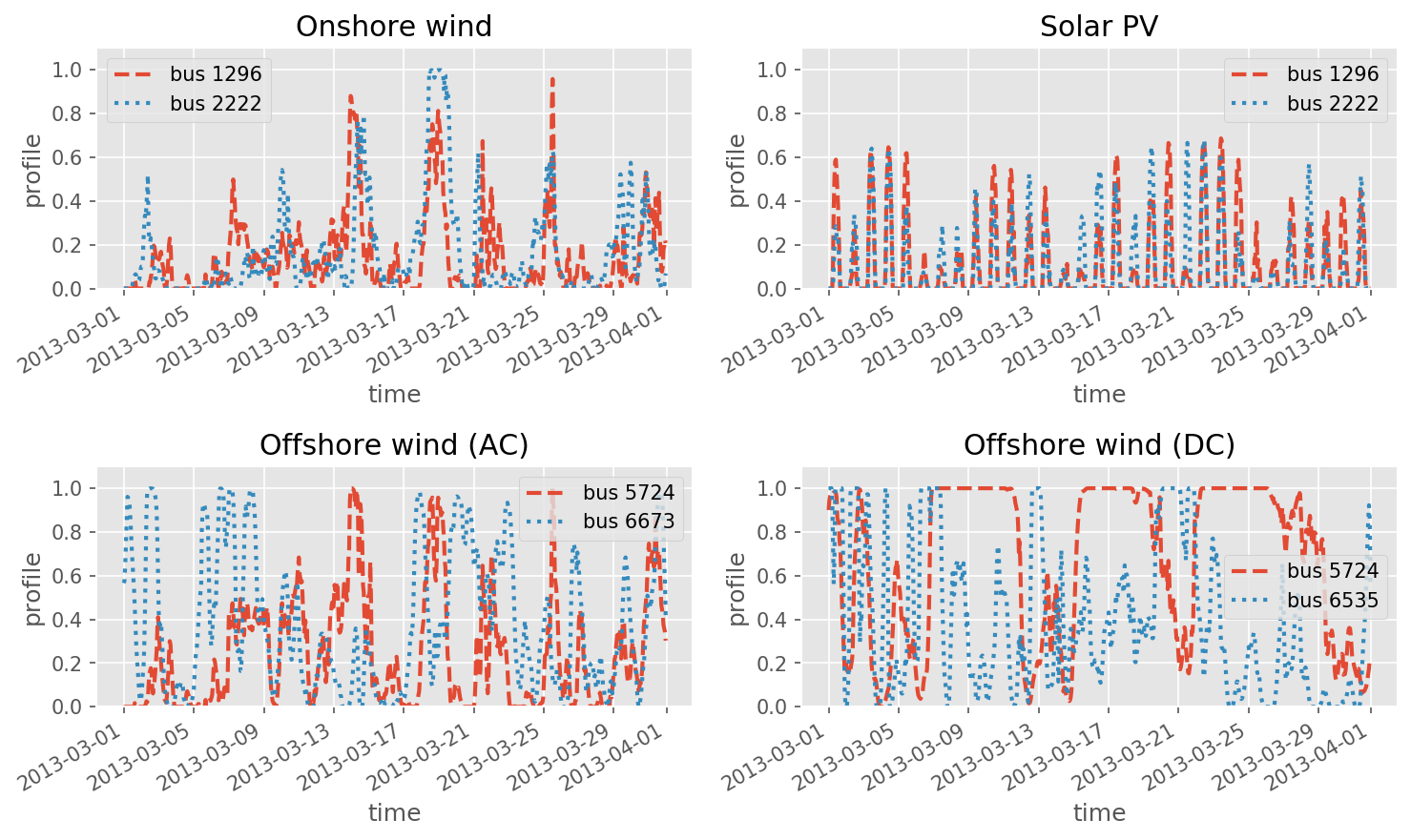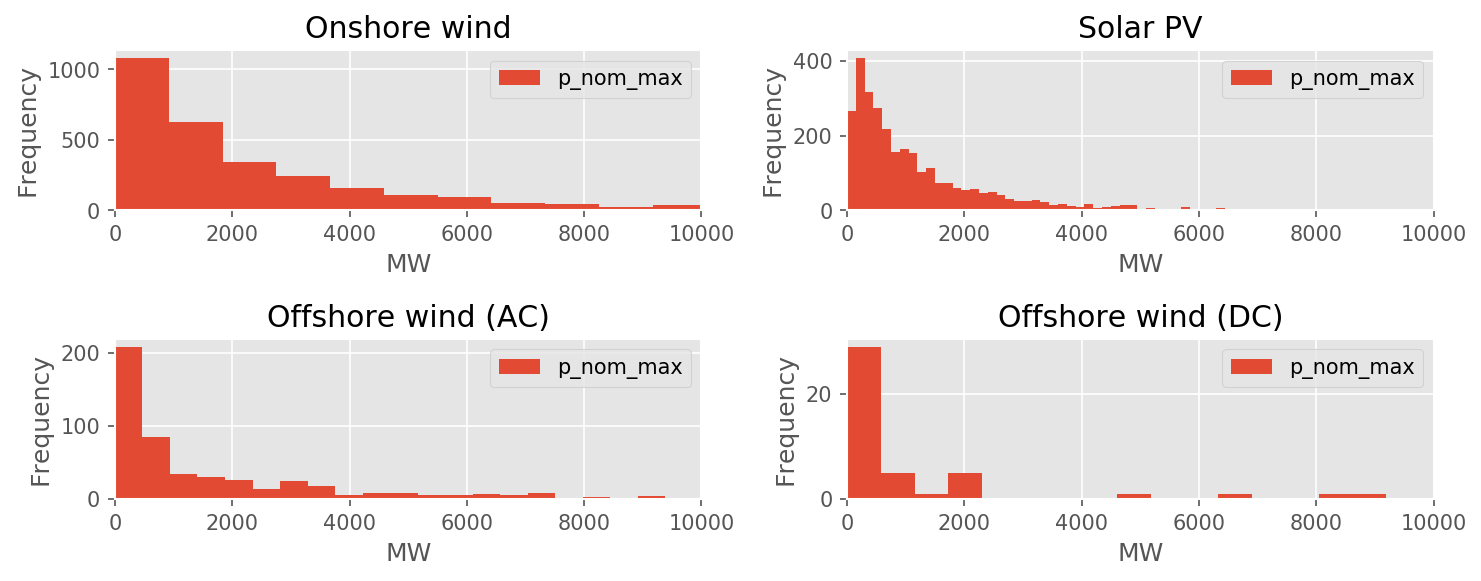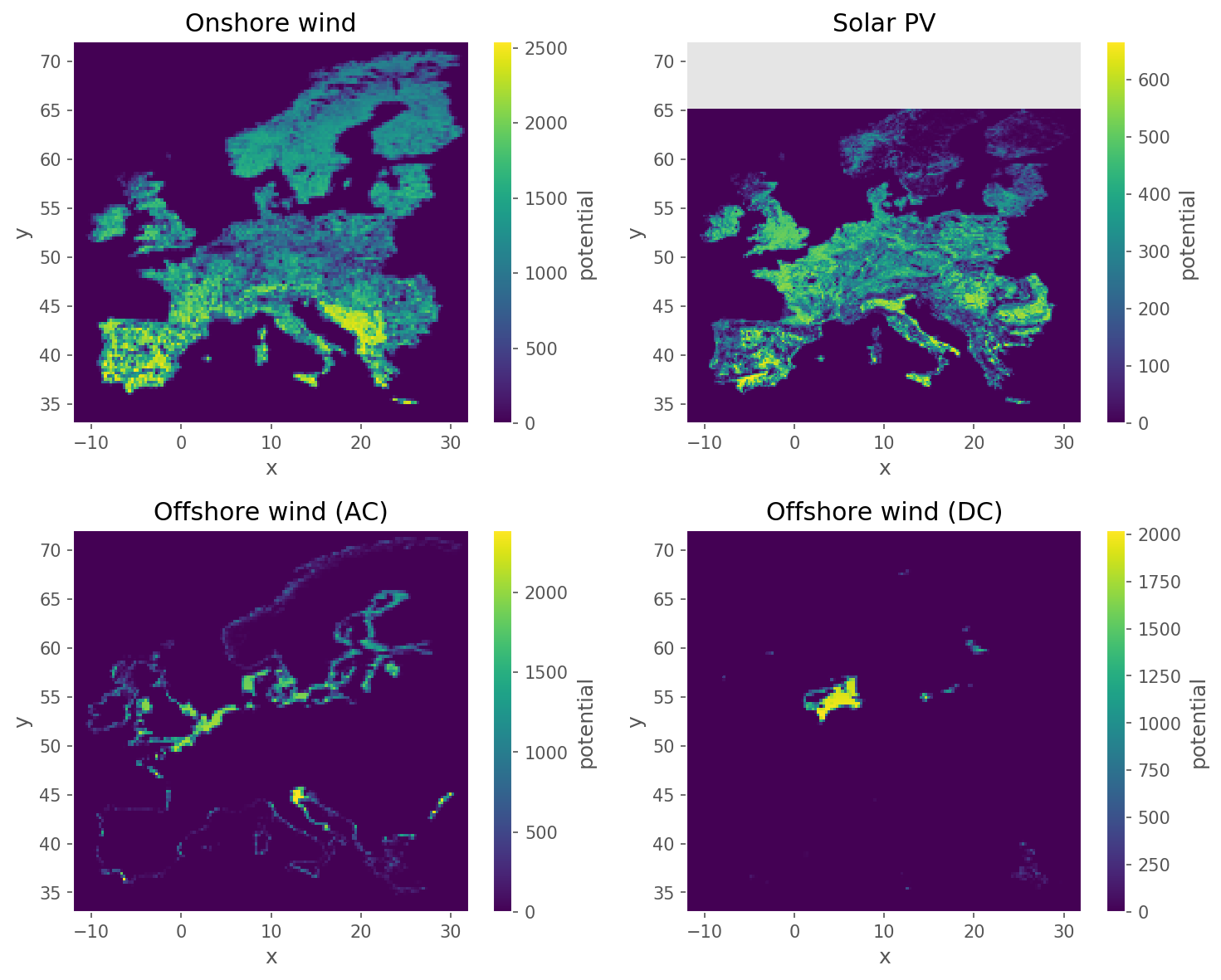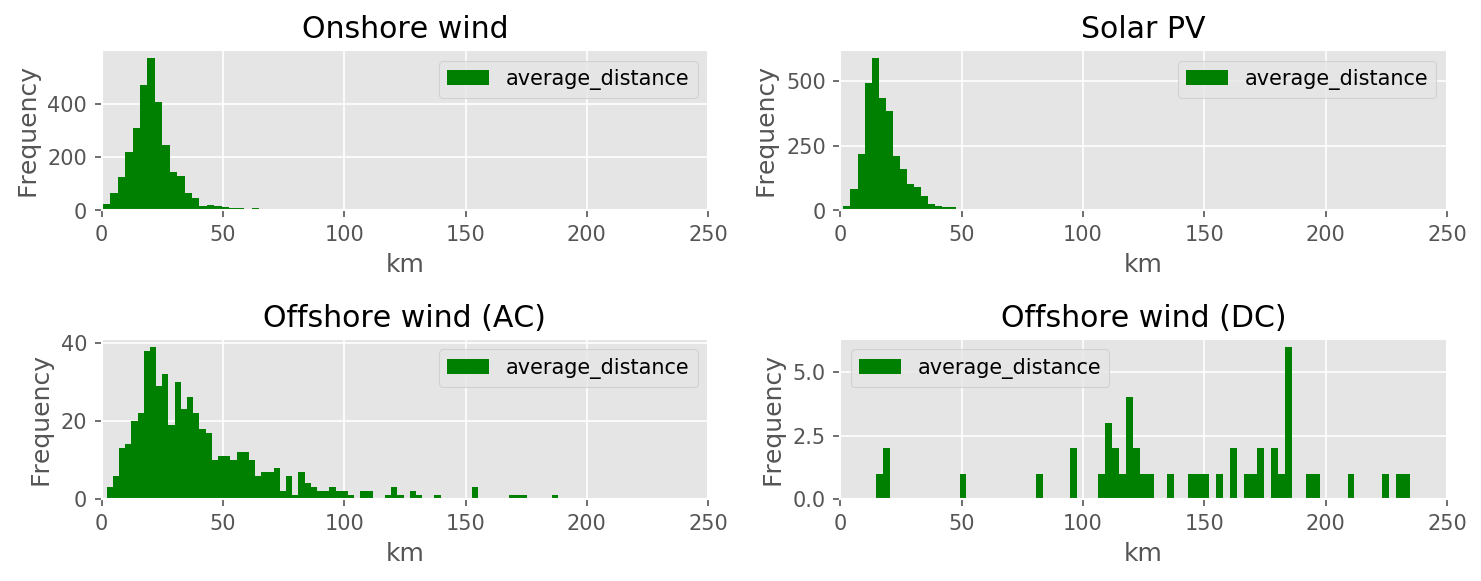Rule build_renewable_profiles#
![digraph snakemake_dag {
graph [bgcolor=white,
margin=0,
size="8,5"
];
node [fontname=sans,
fontsize=10,
penwidth=2,
shape=box,
style=rounded
];
edge [color=grey,
penwidth=2
];
4 [color="0.61 0.6 0.85",
label=add_electricity];
5 [color="0.19 0.6 0.85",
label=build_bus_regions];
9 [color="0.22 0.6 0.85",
fillcolor=gray,
label=build_renewable_profiles,
style=filled];
5 -> 9;
9 -> 4;
6 [color="0.17 0.6 0.85",
label=base_network];
6 -> 9;
8 [color="0.00 0.6 0.85",
label=build_shapes];
8 -> 9;
12 [color="0.31 0.6 0.85",
label=build_natura_raster];
12 -> 9;
13 [color="0.56 0.6 0.85",
label=build_cutout];
13 -> 9;
}](../_images/graphviz-2a9c33e40cbd1c264fc06f8c9b9c6f5113b04723.png)
Calculates for each network node the (i) installable capacity (based on land- use), (ii) the available generation time series (based on weather data), and (iii) the average distance from the node for onshore wind, AC-connected offshore wind, DC-connected offshore wind and solar PV generators. For hydro generators, it calculates the expected inflows. In addition for offshore wind it calculates the fraction of the grid connection which is under water.
Relevant settings#
snapshots:
atlite:
nprocesses:
renewable:
{technology}:
cutout:
copernicus:
grid_codes:
distance:
distance_grid_codes:
natura:
max_depth:
max_shore_distance:
min_shore_distance:
capacity_per_sqkm:
correction_factor:
potential:
min_p_max_pu:
clip_p_max_pu:
resource:
clip_min_inflow:
Inputs#
data/copernicus/PROBAV_LC100_global_v3.0.1_2019-nrt_Discrete-Classification-map_EPSG-4326.tif: Copernicus Land Service inventory on 23 land use classes (e.g. forests, arable land, industrial, urban areas) based on UN-FAO classification. See Table 4 in the PUM for a list of all classes.data/gebco/GEBCO_2021_TID.nc: A bathymetric data set with a global terrain model for ocean and land at 15 arc-second intervals by the General Bathymetric Chart of the Oceans (GEBCO).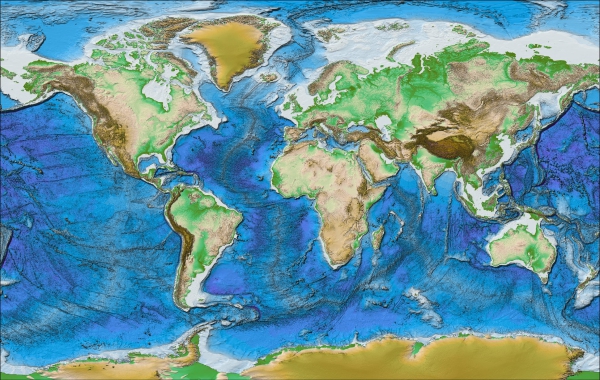
Source: GEBCO
resources/natura.tiff: confer Rule build_natura_rasterresources/offshore_shapes.geojson: confer Rule build_shapesresources/.geojson: (if not offshore wind), confer Rule build_bus_regionsresources/regions_offshore.geojson: (if offshore wind), Rule build_bus_regions"cutouts/" + config["renewable"][{technology}]['cutout']: Rule build_cutoutnetworks/base.nc: Rule base_network
Outputs#
resources/profile_{technology}.nc, except hydro technology, with the following structureField
Dimensions
Description
profile
bus, time
the per unit hourly availability factors for each node
weight
bus
sum of the layout weighting for each node
p_nom_max
bus
maximal installable capacity at the node (in MW)
potential
y, x
layout of generator units at cutout grid cells inside the Voronoi cell (maximal installable capacity at each grid cell multiplied by capacity factor)
average_distance
bus
average distance of units in the Voronoi cell to the grid node (in km)
underwater_fraction
bus
fraction of the average connection distance which is under water (only for offshore)
Description#
This script leverages on atlite function to derivate hourly time series for an entire year for solar, wind (onshore and offshore), and hydro data.
This script functions at two main spatial resolutions: the resolution of the network nodes and their Voronoi cells, and the resolution of the cutout grid cells for the weather data. Typically the weather data grid is finer than the network nodes, so we have to work out the distribution of generators across the grid cells within each Voronoi cell. This is done by taking account of a combination of the available land at each grid cell and the capacity factor there.
This uses the Copernicus land use data, Natura2000 nature reserves and GEBCO bathymetry data.
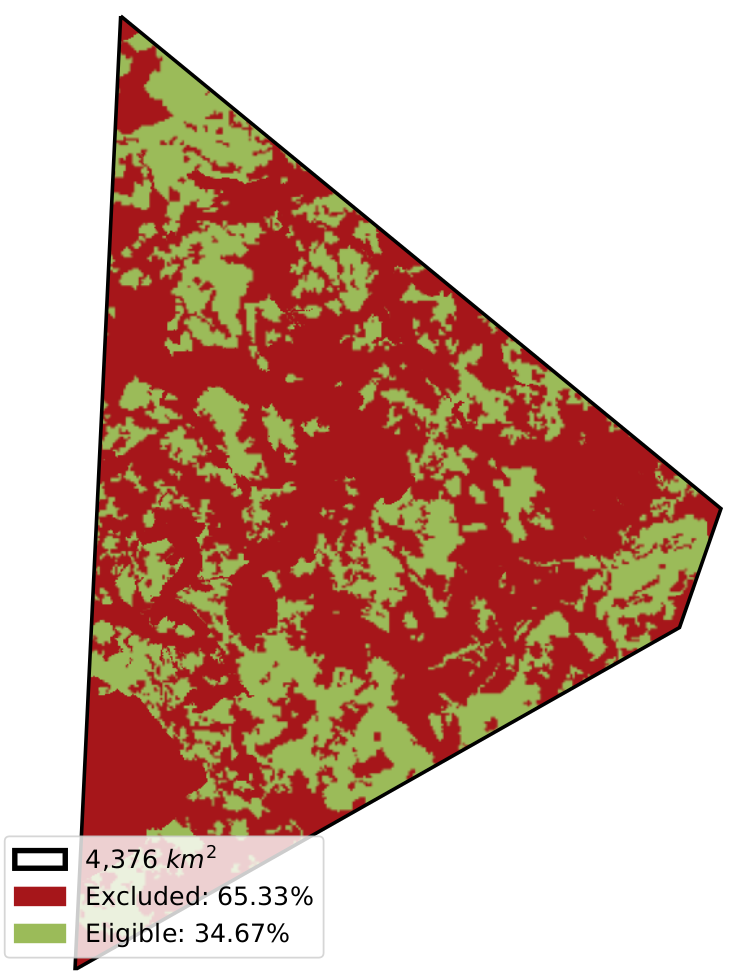
To compute the layout of generators in each node’s Voronoi cell, the installable potential in each grid cell is multiplied with the capacity factor at each grid cell. This is done since we assume more generators are installed at cells with a higher capacity factor.
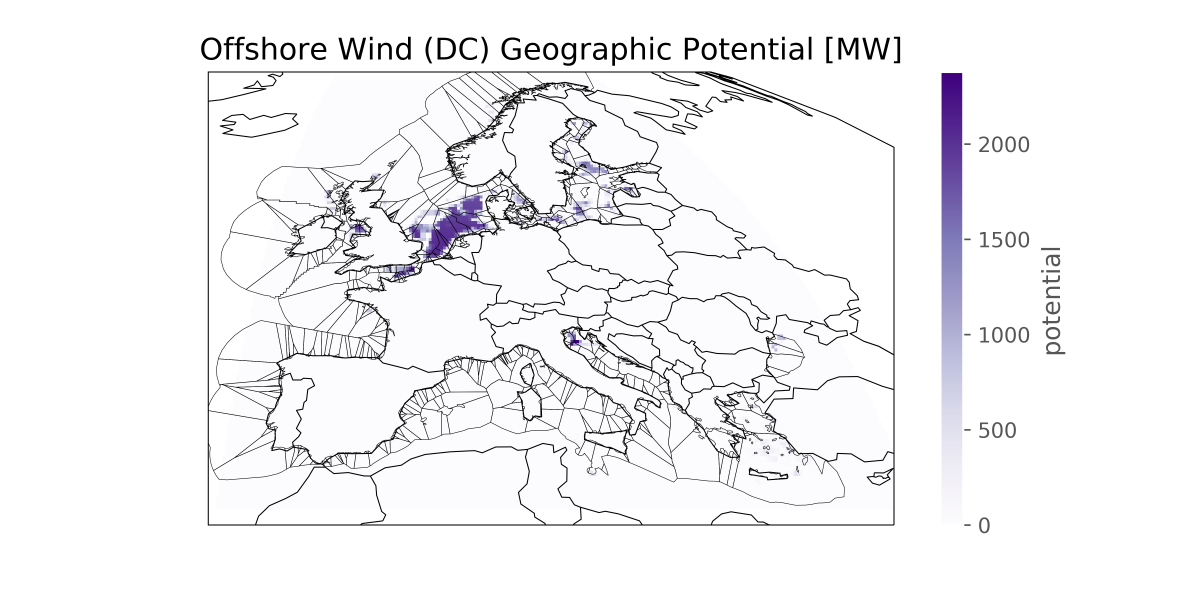
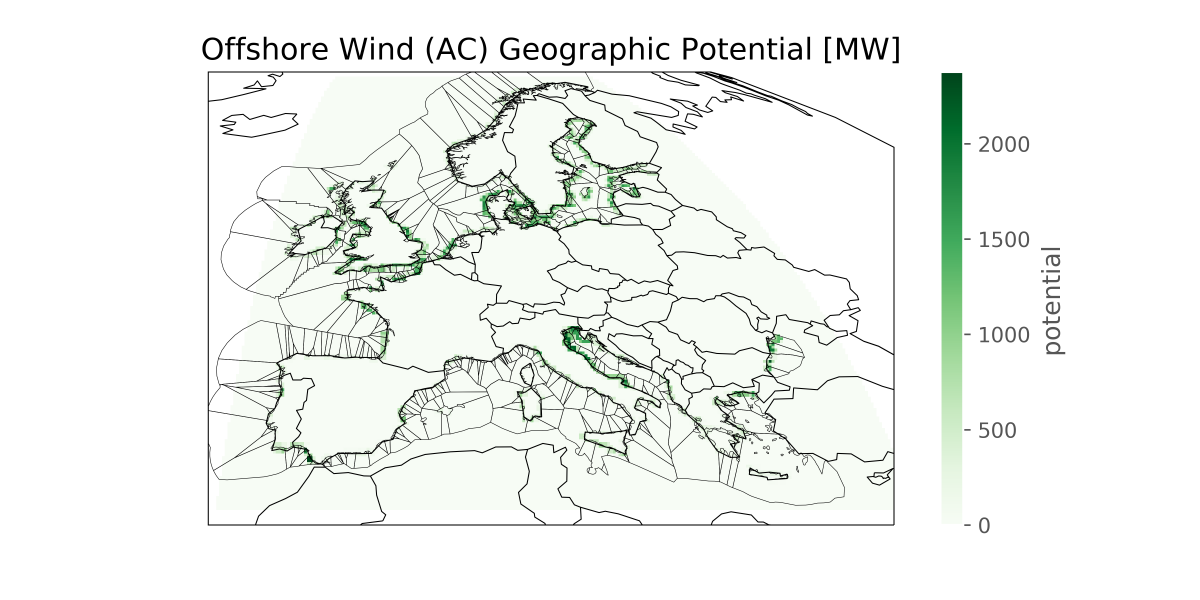

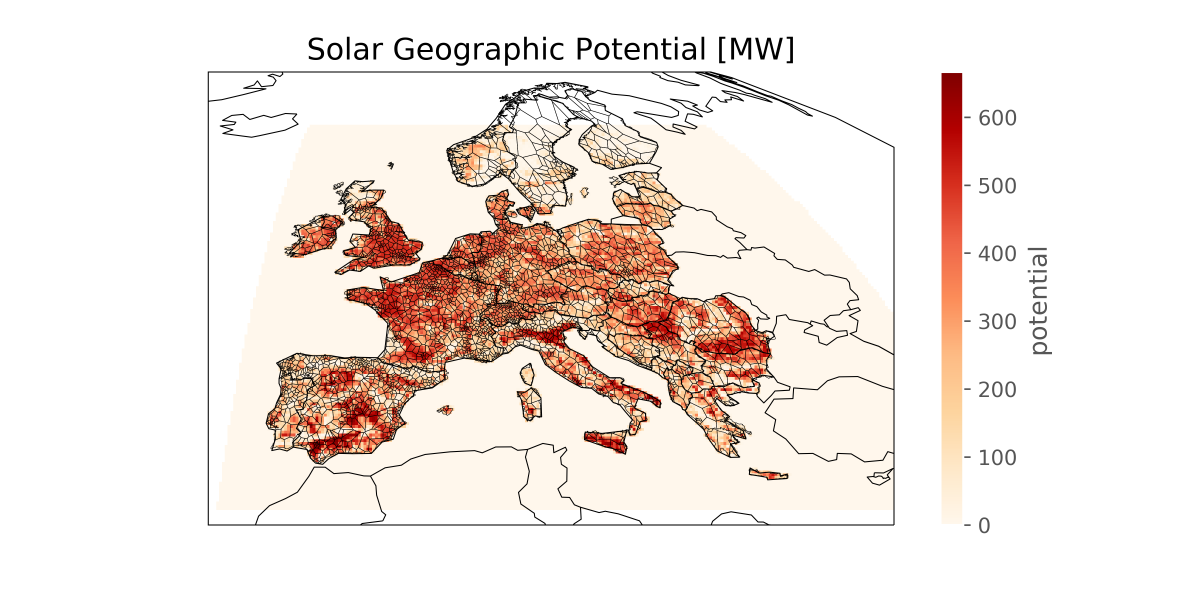
This layout is then used to compute the generation availability time series
from the weather data cutout from atlite.
Two methods are available to compute the maximal installable potential for the
node (p_nom_max): simple and conservative:
simpleadds up the installable potentials of the individual grid cells. If the model comes close to this limit, then the time series may slightly overestimate production since it is assumed the geographical distribution is proportional to capacity factor.conservativeascertains the nodal limit by increasing capacities proportional to the layout until the limit of an individual grid cell is reached.


